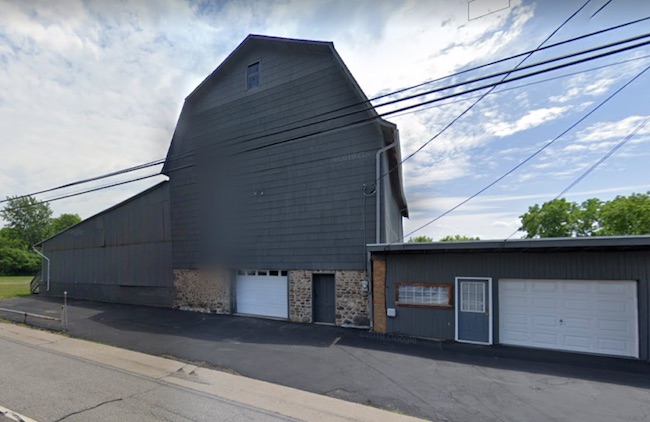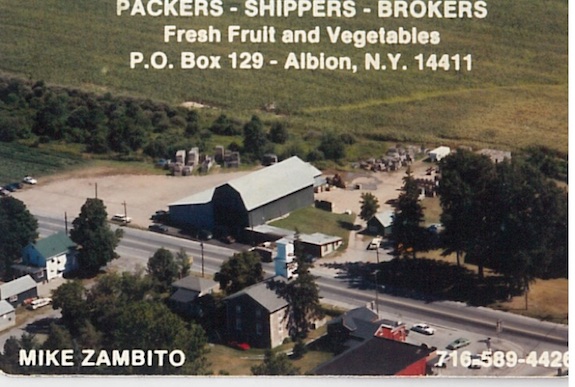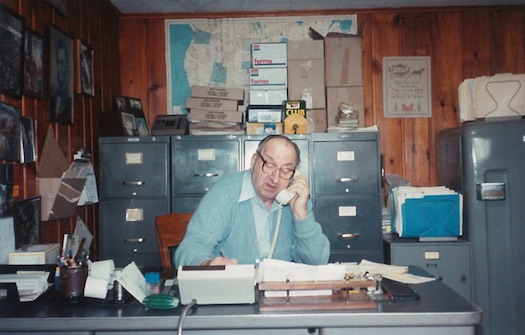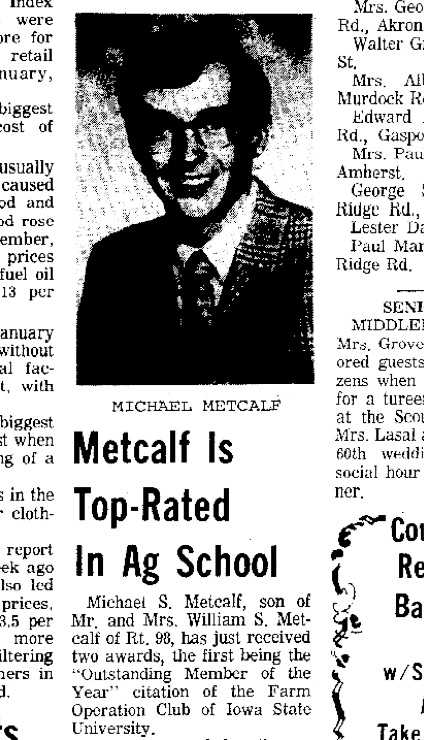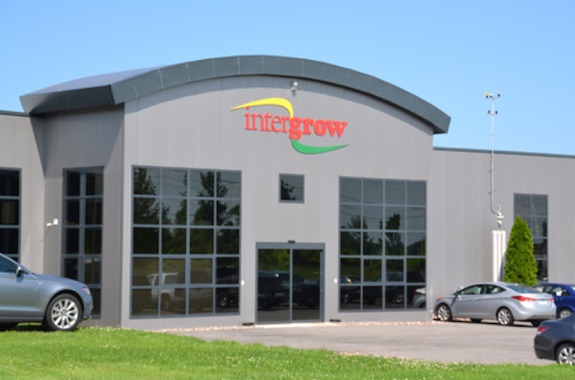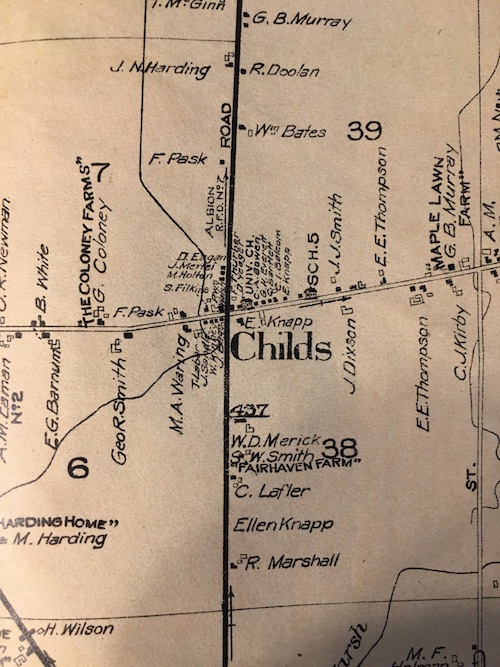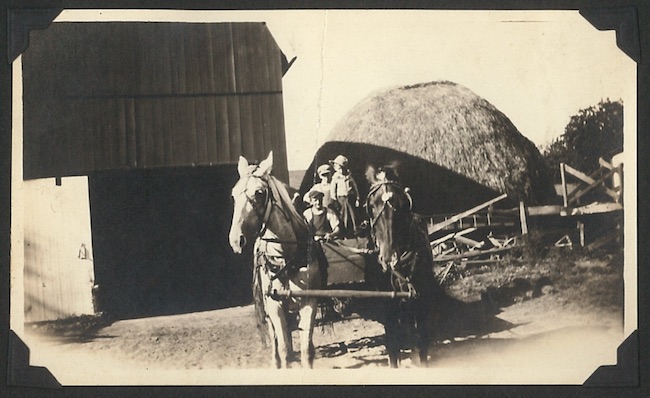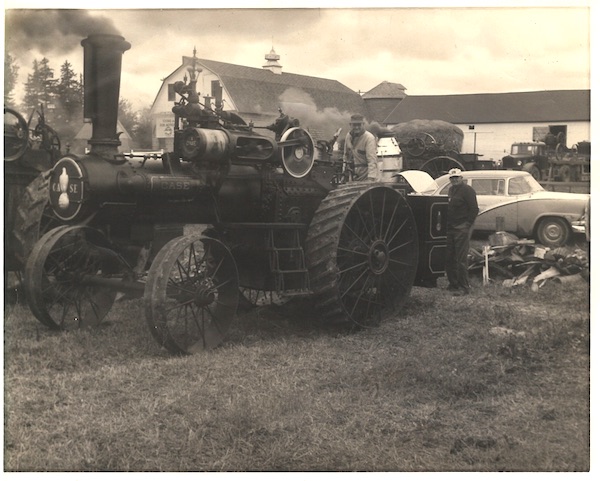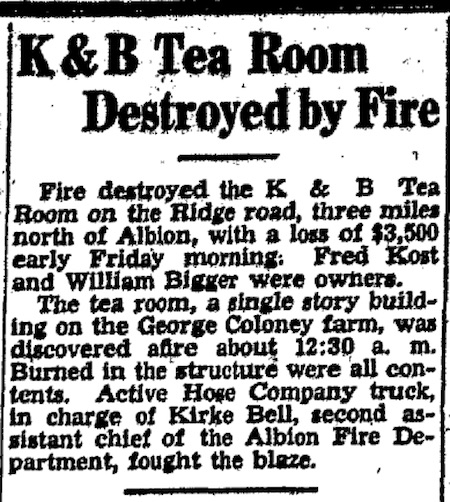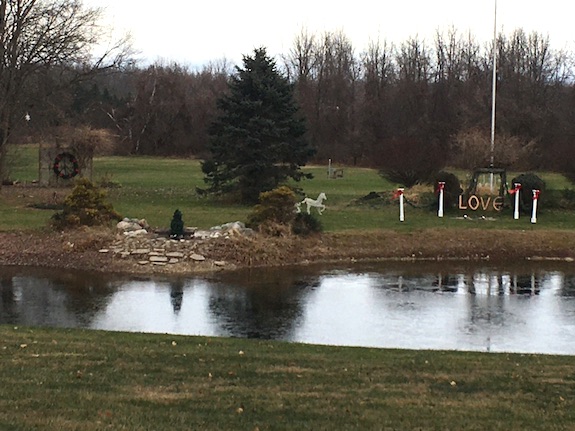Historic Childs: History of Agriculture in the Hamlet, Part 3
By Doug Farley, Cobblestone Museum, Director
GAINES – Another farm operation in the Hamlet of Childs is attributed to Alphonse Zambito who operated Zambito Produce in 1950s in the gray barn across from the Cobblestone Museum on the south side of Ridge Road.
Al got started in the produce business working for the A&P food chain after WWII as their head produce buyer for 13 states. The company offices were located to the right of the barn in the photo above.
Here in Childs Al Zambito ran one of the largest sorting facility for cucumbers in the area. Processing pickles were graded and packed on the ground floor level of the produce company. On the upper floor, fresh market cucumbers were packed with a capacity there up to 5,000 bushels a day.
The plant also packed tomatoes, acorn squash, and cabbage. Al’s son, Michael Zambito, carried the torch forward for many more years, into the last quarter of the 20th century. Mike said, “I remember we brought in loads of red cabbage from Holland and green cabbage from Michigan and Virginia. My dad also brokered onions and beets. We were a very busy place.”
Mike Zambito recalled that his father got started after leaving school in the 6th grade. Al worked to help build the Lipton Plant in Albion and then left for the service. Mike said, “After the war, Dad teamed up with Mike Kodish from NYC who gave him some money to start his packaging plant in Childs. Dad eventually bought out Mike Kodish!”
Mike Metcalf offered his reflections on farming in the Hamlet of Childs, too. He grew up on the east side of Route 98, about one-half mile north of Route 104. Mike’s dad, William, was a Soil Conservation Service Officer. This was a federal position that supervised farm drainage and construction of farm ponds.
As a child, Mike recalls that Lee Harding and John Murray raised sheep on their adjoining farms in the 1950s. Mike said, “Growing up with all the sheep, it was like a giant playground.” He recalls the sheep creating trails that crisscrossed the pastures that he and his brother and two sisters would enjoy running through.
Mike received his farm training, graduating in 1974, from Iowa State University, where he received the “Outstanding Member of the Year Award,” from the University’s Farm Club, and the “Real Guy Award,” the highest honor bestowed by the Iowa State University College of Agriculture. Immediately following college, Mike became involved in Orleans County farming, including animal husbandry and crop farming. Mike’s current farming interests include about 300 acres on Route 279 and has held many leadership positions in Orleans County Farm Bureau.
Mike Metcalf also remembers the fire in 1970 that destroyed Lee Harding’s barn on Route 98. After the fire, Harding sold his property to what would become the large corporate farm, Intergrow, a farm operation that deserves its own story in a later article.
Another historic farm on the west end of the Hamlet of Childs was called Coloney Farms, dating back to the early 1800s. The progenitor in the Coloney family was George Coloney who purchased the farm from Russell and Betsey Gillett in 1885. George started the farm keeping horses and grew the farm to over 160 acres, primarily on the west side of Childs. George and his wife, Bertha Balcom Coloney, built a 2,700 sq. ft. house on the property in which the extended family still resides today.
George and Bertha Coloney had six children (shown above): Orson, George, Jr., Rosabell, Marian, Marjorie and Eleanor. Eleanor’s son, Gerald Coloney Monagan and his wife, Beverly (Thompson) Monagan, now live in the Coloney family homestead. Jerry explained that the Coloney homestead (shown above) passed out of the family for about 16 years until his purchase of the property returned it to the extended Coloney family line. Jerry professed, “I’m really just a gentleman farmer. Eugene Leigh farmed the back 128 acres. I bought 32 acres and raised about 10 acres of cucumbers.” Jerry’s principal livelihood was employment at Kodak in Rochester.
George Coloney’s sons, Orson and George, Jr., continued the Coloney farming legacy and managed 2,000 acres, primarily in Carlton. They produced tomatoes that they sold to Hunt’s in Albion and also maintained a labor camp for field workers who came up from the southern states in the summer.
Coloney Farms with its active horse stables, needed a plentiful supply of fresh straw for bedding. Here we see an early 1900s straw stack on the farm.
Horses provided the “horsepower” to do many farm chores during the 1800s and early 1900s. The next generation of horsepower was provided by steam engines. Here, in this 1950s farm scene, we see an early Case Steam Tractor at work. This tractor displays the “Old Abe” eagle logo on its front, a Case trademark beginning in 1865.
Tragedy struck Coloney Farm on Friday, November 22, 1935 when the K&B Tea Room, a small structure on the farm, was destroyed in an early morning fire.
Current farm residents Jerry and Bev Monagan always had a problem with standing water near the house, so they decided to dig a pond. Gerry said, “We went down 14 feet and hit bedrock, but never hit water.” The 14’ deep pond is just filled with surface water.” The family has used the pond for swimming and has kept Black Labs that have enjoyed the water, too, along with some coy fish and bass that have been stocked.

























